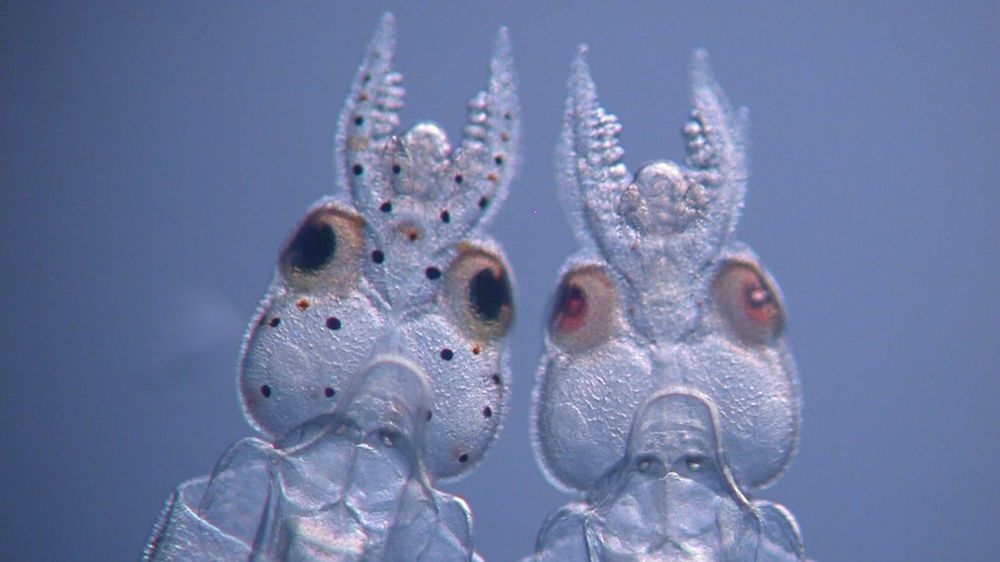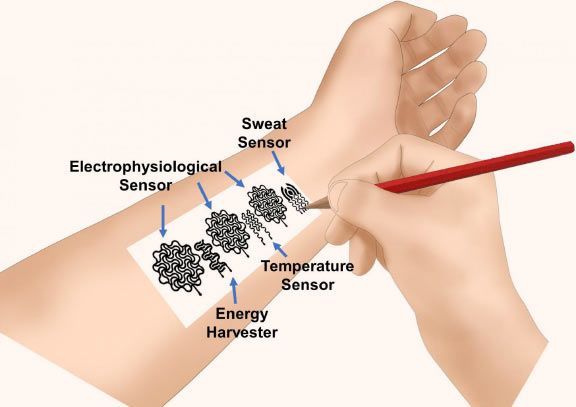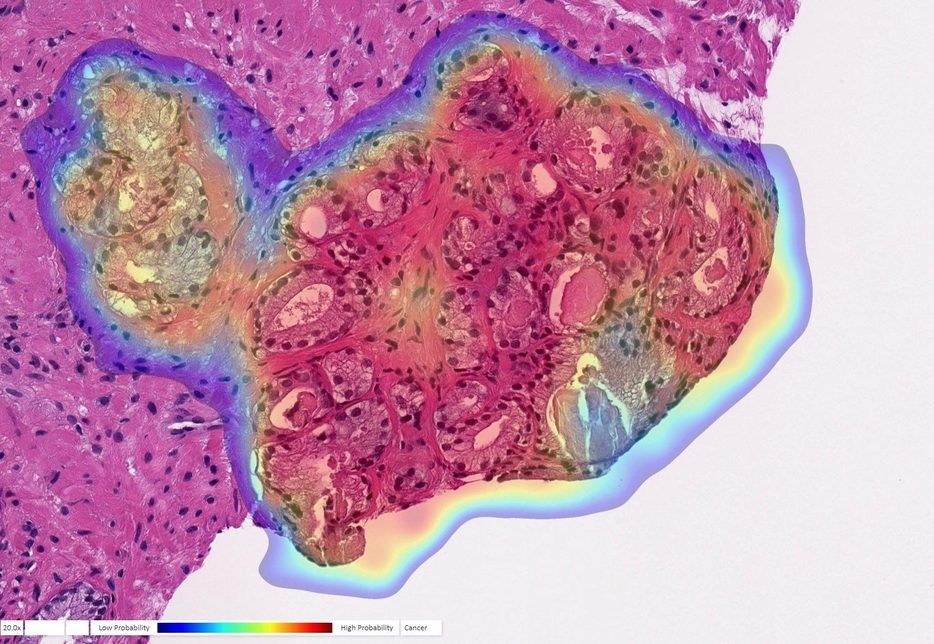Researchers Figure Out How To Genetically Alter Squid : Shots — Health News Scientists have modified the genes of a squid, and genetically-altered octopuses could be coming soon.



Dowload the pdf
Cannabis sativa, especially one high in the anti-inflammatory cannabinoid cannabidiol (CBD), has been proposed to modulate gene expression and inflammation and harbour anti-cancer and anti-inflammatory properties. Working under the Health Canada research license, we have developed over 800 new Cannabis sativa lines and extracts and hypothesized that high-CBD C. sativa extracts may be used to modulate ACE2 expression in COVID-19 target tissues. Screening C. sativa extracts using artificial human 3D models of oral, airway, and intestinal tissues, we identified 13 high CBD C. sativa extracts that modulate ACE2 gene expression and ACE2 protein levels. Our initial data suggest that some C. sativa extract down-regulate serine protease TMPRSS2, another critical protein required for SARS-CoV2 entry into host cells.
While our most effective extracts require further large-scale validation, our study is crucial for the future analysis of the effects of medical cannabis on COVID-19. The extracts of our most successful and novel high CBD C. sativa lines, pending further investigation, may become a useful and safe addition to the treatment of COVID-19 as an adjunct therapy. They can be used to develop easy-to-use preventative treatments in the form of mouthwash and throat gargle products for both clinical and at-home use. Such products ought to be tested for their potential to decrease viral entry via the oral mucosa. Given the current dire and rapidly evolving epidemiological situation, every possible therapeutic opportunity and avenue must be considered.
With the rapidly growing pandemic of COVID-19 caused by the new and challenging to treat zoonotic SARS-CoV2 coronavirus, there is an urgent need for new therapies and prevention strategies that can help curtail disease spread and reduce mortality. Inhibition of viral entry and thereby spread constitute plausible therapeutic avenues. Similar to other respiratory pathogens, SARS-CoV2 is transmitted through respiratory droplets, with potential for aerosol and contact spread. It uses receptor-mediated entry into the human host via angiotensin-converting enzyme II (ACE2) that is expressed in lung tissue, as well as oral and nasal mucosa, kidney, testes, and the gastrointestinal tract. Modulation of ACE2 levels in these gateway tissues may prove a plausible strategy for decreasing disease susceptibility. Cannabis sativa, especially one high in the anti-inflammatory cannabinoid cannabidiol (CBD), has been proposed to modulate gene expression and inflammation and harbour anti-cancer and anti-inflammatory properties. Working under the Health Canada research license, we have developed over 800 new Cannabis sativa lines and extracts and hypothesized that high-CBD C. sativa extracts may be used to modulate ACE2 expression in COVID-19 target tissues. Screening C. sativa extracts using artificial human 3D models of oral, airway, and intestinal tissues, we identified 13 high CBD C. sativa extracts that modulate ACE2 gene expression and ACE2 protein levels. Our initial data suggest that some C. sativa extract down-regulate serine protease TMPRSS2, another critical protein required for SARS-CoV2 entry into host cells. While our most effective extracts require further large-scale validation, our study is crucial for the future analysis of the effects of medical cannabis on COVID-19. The extracts of our most successful and novel high CBD C. sativa lines, pending further investigation, may become a useful and safe addition to the treatment of COVID-19 as an adjunct therapy. They can be used to develop easy-to-use preventative treatments in the form of mouthwash and throat gargle products for both clinical and at-home use. Such products ought to be tested for their potential to decrease viral entry via the oral mucosa. Given the current dire and rapidly evolving epidemiological situation, every possible therapeutic opportunity and avenue must be considered.

This sucks.
Per- and polyfluoroalkyl substances (PFAS), found in many household products and food packages, have raised concerns because of their persistence and possible toxicity to people and wildlife. Because the compounds don’t break down naturally, they have become environmental contaminants. Now, researchers reporting in Environmental Science & Technology have studied the transport of 29 PFAS into and out of the Arctic Ocean, detecting a newer compound for the first time in Arctic seawater.
After studies indicated that two PFAS—PFOA and PFOS—can cause cancer, a compromised immune response and other health problems in lab animals, the two compounds were voluntarily phased out by industry. However, these legacy compounds are still widely detected in the environment. Intended as a safer replacement for PFOA, HFPO-DA (sold under the trade name GenX) is now thought to pose similar health and persistence concerns. Hanna Joerss and colleagues wanted to investigate the long-range, oceanic transport of legacy and replacement PFAS to the Arctic Ocean—a remote body of water connected to the Atlantic Ocean by the Fram Strait, which is located between Svalbard and Greenland.
Aboard an icebreaker research ship, the team collected water samples along two Fram Strait currents entering and exiting the Arctic Ocean and along a path from Europe’s North Sea to the Arctic Ocean. Using mass spectrometry, the researchers detected 11 PFAS in the ocean water, including PFOA, HFPO-DA and other long- and short-chain PFAS. This was the first time that HFPO-DA had been detected in seawater from a remote region, indicating that the compound can be transported long distances. Higher levels of PFAS were detected in the water exiting the Arctic Ocean compared with the water entering the Arctic from the North Atlantic. The PFAS composition in the outgoing water suggested that more of these compounds arose from atmospheric sources than from ocean circulation.

An Artificial Intelligence tool to help funders identify specialists to peer-review proposals for emergency research has been developed by Frontiers. It aims to help fast-track the allocation of funding, and in turn, accelerate the scientific response.
An Artificial Intelligence (AI) tool to help funders identify specialists to peer-review proposals for emergency COVID-19 research has been developed. It aims to help fast-track the allocation of funding, and in turn, accelerate the scientific response to the virus.
The open-access publisher Frontiers has specifically developed the recommendation tool to aid funders during the crisis by helping them identify new reviewers. Under normal circumstances, the review process for research funding typically takes place by committee and can take a matter of months. However, since the COVID-19 outbreak, experts have become less available, and the urgency of this situation commands a tighter timeframe.
Simona Grasso, adviser in health research and health innovation at the Research Council of Norway, said: “The reviewer recommender tool made available from Frontiers media, has been helpful and crucial in recruiting experts for our COVID-19 Emergency Call. Due to the short time to assess the proposals, the broad thematic areas of the call and the amount of received application, has been a challenge recruiting many experts with a profile that fully fits the applications. The AI-based recommender tool is straightforward, user-friendly and allowed us to speed-up the recruiting process. In three clicks we managed to get a full ‘application-customized’ list over potential reviewers and their relative contact information. This tool is highly recommended. ”.

The most reliable predictor of a relationship’s success is partners’ belief that the other person is fully committed, a Western University-led international research team has found.
Other important factors in a successful relationship include feeling close to, appreciated by, and sexually satisfied with your partner, says the study—the first-ever systematic attempt at using machine-learning algorithms to predict people’s relationship satisfaction.
“Satisfaction with romantic relationships has important implications for health, wellbeing and work productivity,” Western Psychology professor Samantha Joel said. “But research on predictors of relationship quality is often limited in scope and scale, and carried out separately in individual laboratories.”

Scientists from the University of Missouri, the University of Illinois and Yale University have demonstrated that a combination of pencils and paper could be used to create on-skin bioelectronic devices that might be used to monitor personal health. They’ve fabricated and evaluated a rich variety of pencil-paper-based bioelectronic devices, ranging from biophysical sensors and sweat biochemical sensors to thermal stimulators, ambient humidity energy harvesters, and transdermal drug-delivery systems.

A study published today (July 27, 2020) in The Lancet Digital Health by UPMC and University of Pittsburgh researchers demonstrates the highest accuracy to date in recognizing and characterizing prostate cancer using an artificial intelligence (AI) program.
“Humans are good at recognizing anomalies, but they have their own biases or past experience,” said senior author Rajiv Dhir, M.D., M.B.A., chief pathologist and vice chair of pathology at UPMC Shadyside and professor of biomedical informatics at Pitt. “Machines are detached from the whole story. There’s definitely an element of standardizing care.”
To train the AI to recognize prostate cancer, Dhir and his colleagues provided images from more than a million parts of stained tissue slides taken from patient biopsies. Each image was labeled by expert pathologists to teach the AI how to discriminate between healthy and abnormal tissue. The algorithm was then tested on a separate set of 1,600 slides taken from 100 consecutive patients seen at UPMC for suspected prostate cancer.

People often talk about sugar intake and health 🤔
Researchers have successfully increased cancer cells’ sensitivity to chemotherapy to prevent glucose from entering the cancer cell.
Researchers at Lund University in Sweden have successfully increased cancer cells’ sensitivity to chemotherapy by preventing sugar uptake. Their study, “Targeting Glut1 In Acute Myeloid Leukemia To Overcome Cytarabine Resistance,” is published in Haematologica.
It is true that sugar feeds every cell in our body, even cancer cells. Researchers have long wondered if it would be possible to prevent glucose from entering the cancer cell and in that way increase the effect of chemotherapy.
To enable sugar molecules to enter the cancer cell through the cell membrane, the cell uses glucose transporters (GLUTs), which allow substances in and out. Researchers decided to study GLUT1 and its role in acute myeloid leukemia (AML).

A radiation-absorbing fungus found at the destroyed Chernobyl nuclear reactor has been shown to absorb harmful cosmic rays on the International Space Station, and could potentially be used to protect future Mars colonies.
Exposure to cosmic rays poses a major health risk to astronauts leaving Earth’s protective atmosphere. Shields can be made out of stainless steel and other materials, but they must be shipped from Earth, which is difficult and costly.
Jacques Cousteau’s grandson is pushing for the construction of a real-life Sealab 2021. The proposed undersea laboratory is so foreign to our idea of marine studies that it’s being likened to a space station that’s also under the ocean.
The station is named Proteus, not for the changing nature of matter (like a new uncuttable material with the same name), but for the shepherd of the sea. By placing a station 60 feet underwater around the Caribbean island of Curacao, sponsoring Northeastern University says it can reduce divers’ high amount of overhead time and reduce the danger of nitrogen-induced health effects.